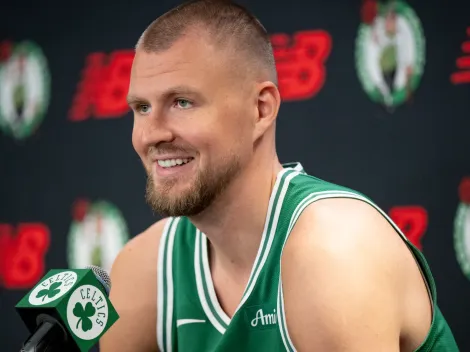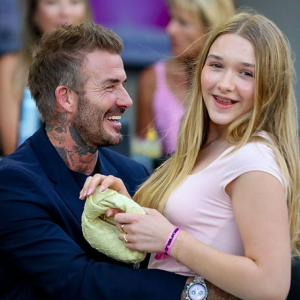In a developing story that has Celtics fans buzzing with concern, reports are surfacing that the Boston Celtics are dealing with a significant dilemma surrounding their offseason acquisition, Kristaps Porzingis. While many expected the 7-foot-3 Latvian to not only bolster the team’s frontcourt depth but also provide a dynamic scoring option and defensive anchor, recent developments suggest that the issue at hand transcends the typical injury concerns that have often dogged Porzingis throughout his career. Instead, the problem is rooted in the chemistry and fit within the Celtics’ established framework, particularly revolving around the roles of the existing stars, Jayson Tatum and Jaylen Brown.
Porzingis, who arrived in Boston with a wealth of expectations, has shown flashes of brilliance that remind fans why he was once considered a franchise cornerstone. However, his integration into the Celtics’ system has raised eyebrows, as questions loom regarding how he meshes with Tatum and Brown. The Celtics have prided themselves on their versatility and ball movement, and Porzingis’ presence sometimes disrupts that flow. He has a tendency to command the ball, and while he possesses the ability to stretch the floor with his shooting range, the question remains: Can he coexist effectively with two of the league’s most talented wings who similarly thrive in high-usage situations? At times, Porzingis seems to drift into a rhythm that disrupts the established offensive structure, leading to stagnant possessions that fans have come to associate with teams lacking cohesion.
Moreover, the Celtics’ coaching staff is now faced with the challenge of redefining roles to maximize the potential of all their star players. The question of spacing becomes paramount, as Porzingis’ ability to shoot from beyond the arc can open things up, but it also raises concerns about where to allocate touches in an already star-studded lineup. Critics argue that without clear communication and understanding among the trio, the team risk falling into a pattern of isolation plays rather than embracing the ball movement that has defined their success in recent years. As Porzingis adjusts to his new environment, balancing his aggressive scoring instincts with the need to fit within a system that prioritizes teamwork will be crucial.
Beyond the court, the Celtics organization is now grappling with potential repercussions related to team dynamics. With high expectations from the fanbase and the media, expectations are amplified; any signs of discord or misalignment among the players can quickly become magnified. Reports of tension within the locker room or perceived friction between Porzingis and the other stars could lead to speculation, and the pressures of the NBA season will only heighten those concerns. The Celtics made a bold move to acquire Porzingis, believing he could be a game-changer on their quest for an NBA championship. However, as the early part of the season unfolds, the question of whether he can solidify his role and find harmony with Tatum and Brown remains a critical storyline.

As Boston continues to navigate these uncharted waters, fans eagerly await how the coaching staff will address the evident Porzingis problem. Will adjustments be made to accommodate their new star, or will there be a reevaluation of how the pieces fit together? These pivotal decisions will greatly influence the Celtics’ prospects both now and in the long term. As the situation evolves, one thing is crystal clear: the Celtics have a Kristaps Porzingis problem that extends far beyond the physical realm, testing the very essence of the team’s identity and aspirations for greatness in a fiercely competitive NBA landscape.





